Ralph Paine – 19 August, 2021
Chandelier-like constructions made up from casts of chicken bones hang centrally in three of Mercy's rooms. One includes cylindrical KFC cartons (the famous red ‘n' white striped ‘buckets'). All tied together with twists and knots and lengths of string. Super intricate webs of whiteness…Walk around the rooms and there are REAL deep-fried chicken bones scattered here ‘n' there. Random after thoughts, after-effects. Remnants of stoner food. Little rat morsels glued to the wall under Imperial Ethiopian flag replicas.
Hegel: “Spirit is a bone.”
By ‘spirit’ Hegel means: collectivity, community.
But not in any empirical or sociological sense. Nah, Hegel’s spirit is way more mysterious than that—harder to fathom. More like when Mercy Pictures include the word ‘community’ in their Instagram@mercy.pictures posts for Inspiration Group’s exhibition Judah.
Hegel again: “Spirit, forever elusive, can only be captured in the inertia of a rigid, dead, debased kind of object”. Yeah, in an object like a bone. Spirit is captured in a bone. Community is captured in a bone. A chicken bone. Dem bones, dem bones: Ezekiel 37: 1 - 14.
Chandelier-like constructions made up from casts of chicken bones hang centrally in three of Mercy’s rooms. One includes cylindrical KFC cartons (the famous red ‘n’ white striped ‘buckets’). All tied together with twists and knots and lengths of string. Super intricate webs of whiteness. Spider (conspiracy) theory. The Kraft. Wicked satellites: dead signal, no lights, no crystals (lights and crystals are too alive).
Walk around the rooms and there are REAL deep-fried chicken bones scattered here ‘n’ there. Random after thoughts, after-effects. Remnants of stoner food. Little rat morsels glued to the wall under Imperial Ethiopian flag replicas.
There are white chicken bone motifs everywhere on Mercy’s Insta posts. And on Inspo-G’s Rihana portraits. Earrings, pirate bling, little graphic devices. Xs ‘n’ stars. X marks the spot; stars mark the heavens.
Instagram@col.harland_sanders is running parallel content. KFC shit and shape-shifting portraits of His Imperial Majesty Haile Selassie (who is Dolorez?). A bone-chilling African history lesson. Throne of bones. Bucket full of bones. Bones, bones, bones … & more bones. More accursed shares. More bodies thrown into the river (of Babylon).
—
A PARANOID REGIME OF SIGNS.
It is said that Haile Selassie began his day listening to informers’ verbal reports. The night breeds dangerous conspiracies and the Emperor knew that what happens at night is more important than what happens during the day. During the day he kept his eye on everyone; at night that was impossible. For that reason, he attached great importance to the morning reports.
It is said that during the Emperor’s hours of official functions, the Minister of the Pen always stood at hand and took down all the Emperor’s orders and instructions. The Minister of the Pen was Haile Selassie’s closest confidant and enjoyed enormous power. From the secret cabala of the monarch’s words he could construct any decision that he wished. If a move by the Emperor dazzled everyone with its accuracy and wisdom, it was one more proof that God’s Chosen One was infallible. On the other hand, if from some corner the breeze carried rumours of discontent to the monarch’s ears, he could blame it all on the Minister of the Pen’s stupidity.
It is said that in the Palace questions were always asked from top to bottom, and never vice versa. When the first question was asked in a direction opposite to the customary one, it was a signal that the Revolution had begun.
Mercy’s 2020 exhibition People of Colour was a question asked in the wrong direction.
Judah feels this way too.
—
Community again. The Sanskrit symbol OM stands in for the exhibition’s opening date: 30 (July 2021). OM = universal thought, speech, and action. Breath (everything’s gonna be all right). Inspiration Group rebrand Mercy Pictures as Chill Girls Gallery, appropriating next door’s Calendar Girls logo as their own (this is what you came for—lightning … strikes every time she moves). Round the corner on K Rd there’s an Indian restaurant called Satya. Mercy gets rebranded with that name too.
I contain multitudes.
But Satya is also the name of a famous brand of incense, manufactured by Shrinivas Sugandhalaya, 1/9, Pb No 2318, Magadi Road, Magadi Road, Bengaluru, Karnataka 560023, India. The Satya incense logo appears on all the Insta publicity for Judah, cut ‘n’ pasted over the name Mercy Pictures.
I contain multitudes.
There’s always incense burning at the gallery. And vapes crackling. Meditative cleansing rituals. Feel it. Reincarnation and the transmigration of souls. Demons, angels, bodies, languages, symbols, brands moving in and out of each other, self-othering, modifications of the swarm-brain, rebirth, perpetual cosmic dance, Indra’s logo-net. KA? (who?).
—
It is no longer possible to speak of the contemporary. Judah is an allegory of the conjuncture. A holding-together of opposites, conflict, and disparate times. Of x/anti-x/non-x. Of identities and difference, dissensus and discord, perversities, turn-ons/turn-offs, the Neutral, friends/enemies, all kinds of dynamic and ill-bred notions. The conflicting notions Babylon/Redemption, for example. Judah is a combinatory, an affect-apparatus, a Greimas semiotic square, a desiring machine. As such, Judah is expansive, fecund, swarming, multidimensional (take me to the next level), productive (something’s gonna happen), and as open-ended as one wishes it to be.
A provisional list of the machine’s components:
Colonel Sanders functions as God the Father >>> slave owner, Master >>> white overseer at some antebellum Kentucky plantation >>> hyper-industrialised food production >>> animal cruelty.
Rihana functions as Mother Mary >>> dreadlocked virgin slave (to the rhythm) >>> female Bob Marley >>> the richest woman of THE CULTURE.
The black-framed lines of digitally rendered faces function as Colonel Sanders’ and Rihana’s mutant offspring >>> immaculate (machinic) conception >>> infinite white-passing Jesus >>> facial profiling >>> I am Legion.
The Imperial Ethiopian flags function as the Kingdom and the Glory >>> empty throne room >>> liturgies & sovereignties >>> Rastafari!
The (non) chandeliers function as communal sacrifice (heal the sacrifice by means of the sacrifice) >>> Freud’s death drive, Thanatos >>> contagion >>> ossuaries >>> (bad) dream catchers.
Babylon functions as Empire >>> capitalism, $$ >>> antiblackness.
The name Judah functions as (the impossibility of) Redemption >>> the rendering inoperative of Israel >>> I know a place where we can carry on >>> tribe/iwi >>> whakapapa >>> fourth son of Jacob and Leah >>> I know who I am, and I am not Babylon >>> I & I.
Etc.
—
PRIMAL SCENE.
Turns out that Jacob & Isaac (aka Inspiration Group) were the white-face dudes who stole the Imperial Ethiopian flag replica on People of Colour‘s opening night. Judah includes that flag replica, this time with little fairy lights attached (repent say the crickets on the moon, repent say the crickets in the room).
This gives another take on the mystery of community thing. Yeah, Isaac has exhibited in a couple of Mercy Pictures group shows pre-People of Colour. In other words: Once Were Comrades. And yeah, on Judah‘s opening night Artspace’s Boil Up Crew pitched camp on the street corner outside the gallery. Some of the crew came upstairs and sung a waiata or two. One Love (let’s get together and feel alright).
Manuia le po!
—
INSPO. Another allegory of community:
The Artists were the Esoteric itself. They referred to themselves as “dogs.” They lived by the Doctrine of the Forest and would have no truck with the Exoteric, which alone allows the community to exist. The Householders wished to be the guardians of the community, of normal life, life without upheavals and excesses of knowledge. Knowledge they would take care themselves; all everybody else had to do was live.
But the Artists were not like that. Often they were announced by a great din. Electric guitars, drums, rattles, synthesizers. To their minds, even the earth was first ‘n’ foremost a sound. They dug a deep hole. They stretched out the skin of a sacrificed animal and beat on it with a bone. It was the Earth Drum. Like a ribbon of sound, they slithered around the settled encampments of the Householders—and this itself sufficed to alert those who lived there, with their cars and offices, that an other life was always possible, always fliting outside and beyond; that the community was not everything.
Thus, for a long time the Artists were the sensible presence of the Esoteric. But what is the Esoteric? The Esoteric is the forest. To grasp the ultimate significance of what happens in the society of the Householders, one must go outside that society. S/he who goes out of it breathes for the first time. For the first time s/he is alone. S/he feels terror—and provokes terror. The forest is the roaring of wild packs of dogs—and it is silence and stillness. The young predators and the solitary thinkers communicate through their knowledge, remote now, almost beyond the grasp of the Householders who observe the rites of the hearth and home. What is the esoteric? The thought closest to the vision things have of themselves.
—
On Building Bridges:
Sunday afternoon there was a floor talk at Mercy Pictures. A kinda sit-down. Jacob and Isaac with artist Shiraz Sadikeen. With the vestiges/seeds of a (new?) community. The Coastal Signs crew were there. The Saatchi Saatchi & Saatchi crew. Everyone was hungover from some party the night before. Low affect—which was no bad thing. Isaac played reggae tracks. The korero was, ummm, yeah—inspiring. OM.
—
To end, community—a non-human one:
AFRO-PESSIMISM. Calvin L. Warren in his out-there book Ontological Terror: “The important task for black thinking (philosophizing, theorizing, theologizing, poeticizing) is to imagine black existence without Being, humanism, or the human. Such thinking would lead us into an abyss. But we must face this abyss—its terror and majesty. I would suggest that this thinking leads us into the spirit, something exceeding and preceding the white metaphysical world … The spirit enables one to endure the capitalist-metaphysical holocaust; it is not a solution to antiblackness. The spirit will not transform an antiblack world into some egalitarian landscape—the antiblack world is irredeemable.”
Spirit (or community) is a tangle of bones hanging over an abyss.
—
Text gleanings from:
Roberto Calasso, Ka, London: Vintage, 1999.
Saidiya V. Hartman, Scenes of Subjection: Terror, Slavery, and Self-Making in 19th Century America, New York: Oxford University Press, 1997.
Frederic Jameson, The Hegel Variations: On The Phenomenology of Spirit, London & New York: Verso, 2010.
Ryszard Kapuscinski, The Emperor, London: Picador, 1983.
Calvin L. Warren, Ontological Terror: Blackness, Nihilism, and Emancipation, Durham & London: Duke University Press, 2018.
—
Lyric gleanings from:
Bob Marley and the Wailers, One Love: The Very Best of Bob Marley and the Wailers, Tuff Gong and Island Records, 2001.
Lee Scratch Perry, Rainford, On-U Sound Records, 2019.
Finley Quaye, Maverick A Strike, Sony Music, 1997.
Rihana, This Is What You Came For, Reggae Remix (Champion Riddim), Reggaesta: prod. YouTube, May 23, 2020.
Tricky, Maxinquaye, Island Records, 1995.
—
Ralph Paine
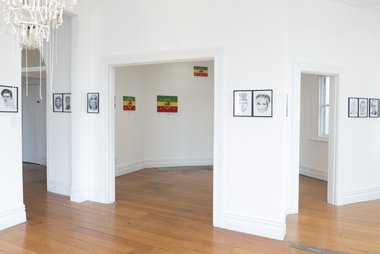
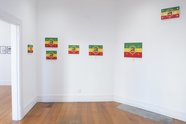
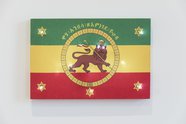



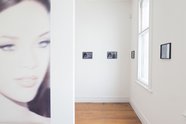


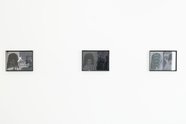

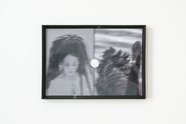
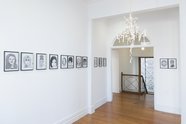

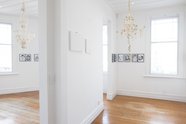



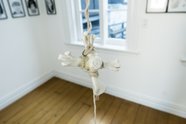
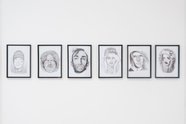


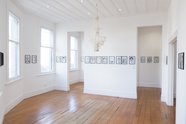

 Two Rooms presents a program of residencies and projects
Two Rooms presents a program of residencies and projects Advertising in this column
Advertising in this column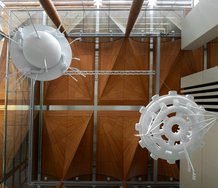
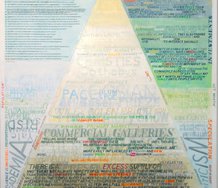
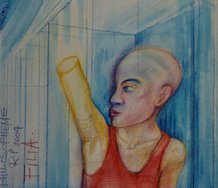
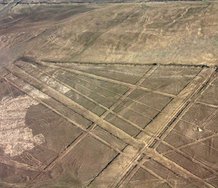
This Discussion has 0 comments.
Comment
Participate
Register to Participate.
Sign in
Sign in to an existing account.